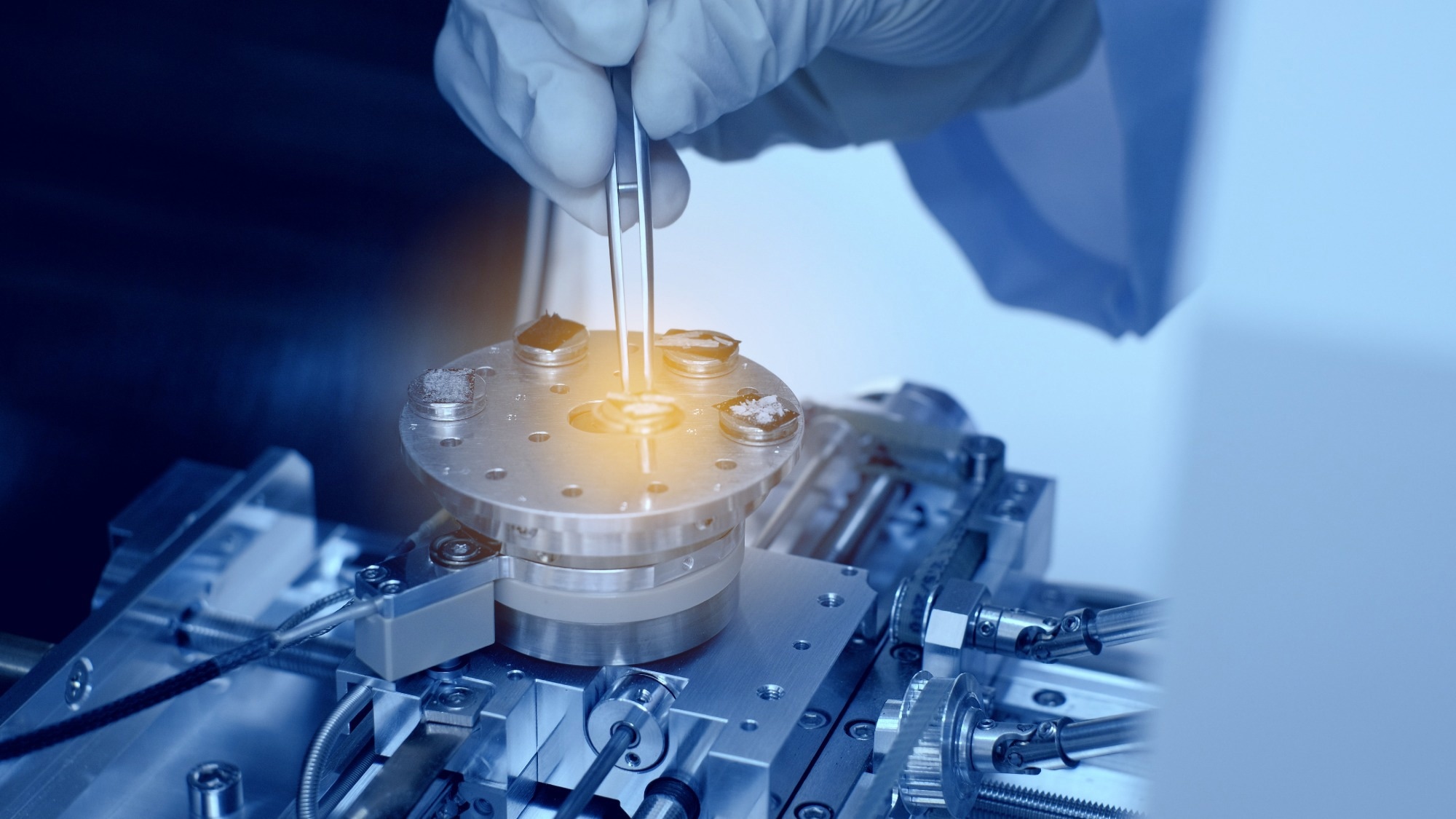A recent article in Scientific Reports explored methods to optimize the preparation of atom probe tomography (APT) specimens for low-melting solder materials (96.5 wt.% Sn–3.0 wt.% Ag–0.5 wt.% Cu (SAC305)). The study used Ga-based focused ion beam (Ga-FIB) techniques at varying field emission scanning electron microscope (FESEM)-FIB stage temperatures.

Image Credit: Anucha Cheechang/Shutterstock.com
Background
Low-melting metal alloys, such as (near-) eutectic alloys, are used in additive manufacturing, liquid phase catalysts, and energy storage media. Understanding the properties of these materials and their behavior under load requires visualizing their underlying micro- and nanostructures.
APT analyses are conducted on small specimens to achieve electron transparency and enhance the electric field. These specimens are typically prepared from a larger region of interest (ROI) using FIB with FESEM imaging.
FIB preparation of low-melting and metastable materials can cause microstructural changes due to the kinetic energy of ions, which are transferred to the sample as heat or momentum change. This can result in ion implantation, partial amorphization, redeposition of sputtered material, and local heating. This study focused on optimizing Ga-FIB preparation of APT specimens for low-melting SAC305 solder materials.
Methods
The SAC305 solder alloy specimen was reflowed at 240 °C, then cooled rapidly to 90 °C and subsequently to room temperature. It underwent 300 thermal cycles between -40 and 125 °C, with ramp and dwell times of 15 minutes each.
APT tips were prepared with a Ga-FIB system. During preparation, a micro-heating and cooling stage was used to control the stage temperature, which was systematically varied (25, -30, and -60 °C) for all FIB-sample interactions.
The Ag3Sn-precipitate sizes in the lamellae cross-sections milled at these temperatures were compared using their respective ROIs. To achieve smaller initial tip radii for the APT samples, the Pt protection layer over the cross-section was replaced with aluminum using physical vapor deposition.
Ga implantation in specimens prepared at different stage temperatures was assessed using APT measurements. The specimens were evaporated by voltage pulsing with a 15 % pulse fraction, 125 kHz frequency, and a 1 % detection rate, stopping at 36 million detected ions. Reconstruction and elemental analysis were performed using Cameca IVAS 6 within AP Suite 6.3 software.
Results and Discussion
Inverse pole figures showed that the solder ball was composed of one large grain and several smaller dynamically recrystallized grains. The kernel average misorientation map indicated minor distortions within the large grain, while the phase map provided details on the phase composition of the solder matrix.
ROI 2 was selected for APT specimen preparation to minimize crystallographic artifacts during milling and reduce Ga implantation. This region was within a single crystal area, free of η-Cu6Sn5 particles.
Preparing APT specimens involved extracting lamellae from the bulk material. The lamellae and trenches prepared at 25 °C differed significantly from those prepared at -30 and -60 °C. Ag3Sn precipitates in the 25 °C lamella cross-section were larger, with both the largest precipitate size and mean area exceeding those in the -30 and -60 °C lamellae. The backside of the upper 25 °C-trench exhibited an irregular structure with finely dispersed Ga- and Ag-rich needles grown in the redeposition.
The stage temperature affected the milling behavior during the final milling step. Specimens milled at 25 and -30 °C showed Pt residue on the APT specimen, while milling at -60 °C resulted in more uniform behavior and stable tip shapes throughout the process, including Pt removal. Milling at -60 °C also reduced the extent of ion implantation.
The specimen prepared at -60 °C with an Al protection layer had a smaller tip radius but did not reduce Ga implantation compared to the Pt protection layer. The Ga distribution was less uniform, and the implantation depth was greater in the Al-protected specimen.
Conclusion
The study investigated the effects of stage temperature on Ga-FIB preparation of APT specimens using the low-melting SAC305 solder alloy and compared two protection layers, Al and Pt. Lowering the milling temperature to -60 °C improved specimen preparation and reduced Ga implantation. Further reductions in temperature might enhance these results.
Limitations included the use of a Peltier cooling system for temperature control and the impact of Ga-FIB on the material. Alternative methods, such as plasma-FIB, could produce different outcomes.
Journal Reference
Cui, C., Tkadletz, M., Reisinger, M., Imrich, P., Hartner, W., Brunner, R. (2024). Effective preparation of low-melting solder materials for atom probe tomography. Scientific Reports. DOI: 10.1038/s41598-024-79753-w, https://www.nature.com/articles/s41598-024-79753-w
Disclaimer: The views expressed here are those of the author expressed in their private capacity and do not necessarily represent the views of AZoM.com Limited T/A AZoNetwork the owner and operator of this website. This disclaimer forms part of the Terms and conditions of use of this website.